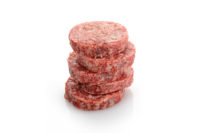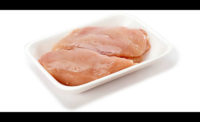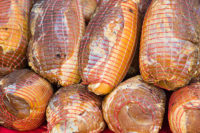Packaging Tech
Interleaving: a fascinating future

The point of interleaving and stacking is to reduce total packaging costs, particularly foodservice packaging, according to an industry source. Processors look to these systems for reliability, simplicity and low cost of ownership. They generally choose between two formats: the more traditional use pre-cut sheets to pick and place, and others choose cut paper from roll stock.
The fascinating story here, however, is about what can be rather than what is. The unrelenting demands for lower packaging costs together with some anticipated improvements in interleaving materials might drive the future of this format, adding value to the supply chain not generally expected from this source.
“We can start to change the performance inside and around packages,” says an equipment executive. Consider coating paper with an antimicrobial material and interleaving foodservice packaging. “Suppose you’ve got a master pack with 12 layers of deli meat and the operator reaches in and removes a portion. He’s impacting the shelf life of everything remaining in that package. If he can get one or two extra days out of the master pack, that’s huge money when you look across the entire supply chain. You can impart a significant amount of value into that product.”
Imagine interleaving portions with black pepper, lemon butter or marinade imparting flavor to the top and bottom of the product. Processors may have scores of flavor profiles customers want. Usually, they batch process enough to fill their orders and freeze what is left over until they sell more of it.
“Let’s say each roll of paper represents a particular flavor. You pull it from dry storage, put it on the interleaver and impart that flavor on the protein, changing the entire process. The processor can run 10 pounds if he wants, box it up and ship it out. You move that much closer to a very flexible just-in-time offering based on lower processing costs.”
Looking further ahead, he points to technology “back-burnered” by some during the past decade. Radio-frequency identification (RFID) antennas can be printed on paper, which can be cut and placed under a portion of deli meat right after slicing. A foodservice operator can track that portion through its life cycle and the supply chain.
“Conceptually, you would have a reader at the store in the waste receptacle so when the paper passes through into the trash can, the liability chain has to some degree been handed off and completed. Now you can communicate portion-level data throughout the supply chain back to the processor. Big data is coming in this regard. The more information we can supply these larger foodservice chains and big suppliers the more value we can give them.”
These are the kinds of developments that may be the future of this packaging format and possibly drive technology and machine sales more through material enhancements that deliver added value. Areas you normally would not expect. NP
Looking for a reprint of this article?
From high-res PDFs to custom plaques, order your copy today!







